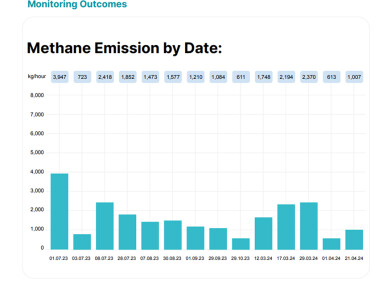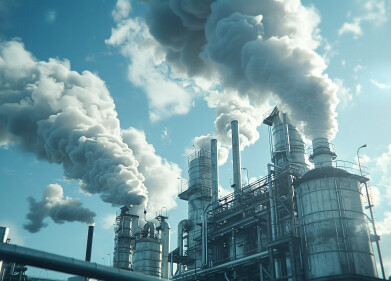Industrial emissions
Where Does Black Carbon Come From?
Aug 13 2022
Defined by some scientists as the second biggest contributor to climate change behind carbon dioxide, black carbon is a chief component of particulate matter (PM). This means that not only is it damaging for the environment, but it can also seriously jeopardise human health if people are exposed to it over a prolonged period of time.
As such, reducing emissions of black carbon at the source has been a key political objective in the Western world for many years now, and progress has been made in mitigating its spread. Nonetheless, it still remains a serious concern across the globe. So where, exactly, does black carbon come from? This article will explore that question from both a technical and geographical standpoint.
Black carbon emissions by source
Black carbon is a by-product of the incomplete combustion of fuel sources. This refers to fossil fuels such as coal, oil and gas, but also biofuels like wood, paper and peat. It can encompass other fuel sources, as well.
When these fuels are combusted completely, they are converted into 100% carbon dioxide. However, this never happens and incomplete combustion invariably results in the creation of black carbon. These particles can then hover in the air, trapping heat from the rays of the sun and raising the ambient temperature, or else migrate to the Arctic Circle and cause ice and snow to melt more quickly.
On a global level, household combustion of fuel sources, such as woodstoves, coal stoves, biomass heating stoves and kerosene lamps accounted for over half (58%) of black carbon emissions in 2015. The transportation industry was the second biggest contributor with 24% of emissions, while industrial production (6%), agriculture (5%) and fossil fuels (3%) were other significant sources.
Black carbon emissions by geographical region
Historically, developed nations in Europe and North America have been responsible for the lion’s share of black carbon emissions. However, increased scrutiny on air quality in these parts of the world over recent years has led to much better monitoring methods and systems, a tightening of standards and a migration away from polluting forms of power generation. As such, black carbon levels have fallen in the USA, the UK, Europe and beyond.
On the other hand, the opposite has occurred in the developing world. Impoverished households in Africa, Asia and parts of Latin America still rely heavily on the combustion of biofuels to heat their homes and cook their food. As a result, this source accounts for a significant proportion of black carbon emissions in these parts of the world.
Meanwhile, awareness over the damaging effects of certain practices (such as crop stubble burning, intentional deforestation and coal burning) is not as widespread in the developing world. Cumulatively, this means that countries in Africa, Asia and Latin America now account for a staggering 88% of global black carbon emissions.
Digital Edition
AET 28.4 Oct/Nov 2024
November 2024
Gas Detection - Go from lagging to leading: why investment in gas detection makes sense Air Monitoring - Swirl and vortex meters will aid green hydrogen production - Beyond the Stack: Emi...
View all digital editions
Events
Jan 12 2025 Abu Dhabi, UAE
Jan 14 2025 Abu Dhabi, UAE
Jan 20 2025 San Diego, CA, USA
Carrefour des Gestions Locales de L'eau
Jan 22 2025 Rennes, France
Safety, Health & Wellbeing LIVE
Jan 22 2025 Manchester, UK



















